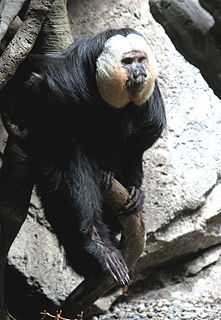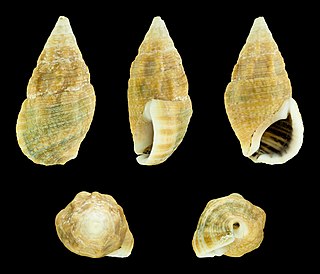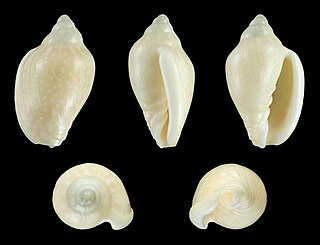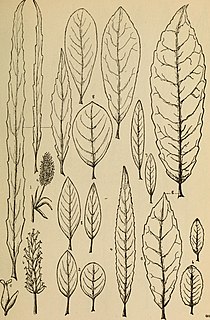Related Research Articles

The waved albatross, also known as Galapagos albatross, is the only member of the family Diomedeidae located in the tropics. When they forage, they follow a straight path to a single site off the coast of Peru, about 1,000 km (620 mi) to the east. During the non-breeding season, these birds reside primarily on the Ecuadorian and Peruvian coasts.

Sakis, or saki monkeys, are any of several New World monkeys of the genus Pithecia. They are closely related to the bearded sakis of genus Chiropotes.

Pitheciinae is a subfamily of the New World monkey family Pitheciidae. It contains three genera and 14 species. Pitheciines are forest dwellers from northern and central South America, east of the Andes.

The Rio Tapajós saki or Gray's bald-faced saki is a species of saki monkey, a type of New World monkey, from South America. It is found in parts of western Brazil, southeastern Colombia, southeastern Peru and possibly northern Bolivia.

The Marquesan grouper is a species of marine ray-finned fish, a grouper from the subfamily Epinephelinae which is part of the family Serranidae, which also includes the anthias and sea basses. It is endemic to French Polynesia. Its natural habitats are open seas, shallow seas, subtidal aquatic beds, and coral reefs.

Littoraria irrorata, also known by the common name the marsh periwinkle, is a species of sea snail, a marine gastropod mollusk in the family Littorinidae. The specific epithet irrorata means 'moistened' or 'dewy.'

Clypeomorus irrorata is a species of sea snail, a marine gastropod mollusk in the family Cerithiidae.

Marginella irrorata is a species of sea snail, a marine gastropod mollusk in the family Marginellidae, the margin snails.

Anticarsia irrorata, the owl moth, is a species of moth in the family Noctuidae. It is native to the Old World tropics.

Digrammia irrorata is a moth of the family Geometridae first described by Alpheus Spring Packard in 1876. It is found in the western United States and south-western Canada.
Phragmataecia irrorata is a species of moth of the family Cossidae. It is found in Zimbabwe, South Africa, Namibia, Botswana, Mozambique, Zambia and Malawi.

Acacia irrorata, known colloquially as green wattle or blueskin, is a species of Acacia which is native to eastern Australia.
L. irrorata can refer to a few different species. The specific epithet irrorata means 'moistened' or 'dewy.'

Glyphopsyche irrorata is a species of northern caddisfly in the family Limnephilidae.

Pseudorthodes irrorata is a species of cutworm or dart moth in the family Noctuidae. It is found in North America.
Saileria irrorata is a species of plant bug in the family Miridae. It is found in North America.

Salix irrorata, the dewystem willow, blue-stem willow, or sandbar willow, is a species of willow native to the US states of Wyoming, Colorado, Arizona, and New Mexico, and to northern Mexico. In spite of its bluestem willow common name, its stems are red, but a white coat develops that makes them appear bluish. A bushy shrub that prefers moist areas, in a garden setting it needs coppicing to both keep it from growing overlarge and to maintain the attractive bark coloration. It has gained the Royal Horticultural Society's Award of Garden Merit as an ornamental.
Mittermeier's Tapajós saki is a disputed species of saki monkey, a type of New World monkey. It is endemic to west-central Brazil.
Pissinatti's saki or Pissinatti's bald-faced saki is a disputed species of saki monkey, a type of New World monkey. It is endemic to Brazil.
Rylands' bald-faced saki is a disputed species of saki monkey, a type of New World monkey. It is found in Bolivia, Peru, and Brazil.
References
- ↑ Biolib.cz - Ectatina irrorata. Retrieved on 8 September 2014.